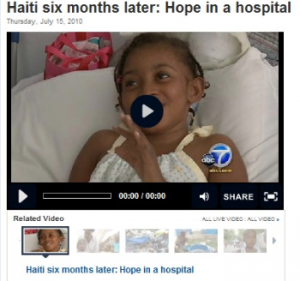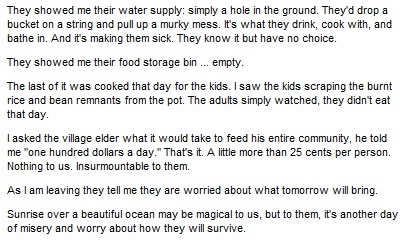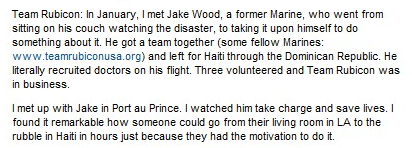- Ono reported from Haiti in January in the immediate aftermath of the 7.2 earthquake. He returned on the six-months anniversary to report on a dire situation across the country.

KABC-TV anchor David Ono, who serves as vice president of broadcast for the LA Chapter, visited Haiti for six days in July — a country with 1.6 million people left homeless six months after a 7.2 magnitude earthquake last January.
Ono’s reporting on a country’s citizens struggle to climb above a national crisis was broadcast on KABC-TV from July 12 – 16.
Despite hundreds of millions of dollars in aid delivered, the millions of people who live on the island face a daily struggle for the most basic necessities. Recovering from a disaster, the Haitians now must prepare themselves for more hardship: hurricane season.
Excerpts from Ono’s daily journal entries and footage from Ono’s four days in the Caribbean country can be seen below. Click here for Ono’s complete July 12 journal entry.
EXCERPT FROM JULY 12
Ono visited one of the thousands of tent cities that is now “home” for many Porta-au-Prince residents.
The tent city he visited is located directly across the street from a presidential palace in ruin. There is no relief, not even in the most common routines: In the village Ono visited even their drinking water supply, a green cesspool, is a health hazard. Ono witnesses first-hand the stories of malnutrition that will carry a devastating effect on the next generation of Haitians.
Ono’s July 13 journal entry spotlights how a small donation of $100 could carry a profound effect on an entire village of people.
A young Haitian man see Ono and his camera crew, and he rushes to tell the reporter about the devastating effect the earthquake has had on his life.
On this day, Ono would hear another one of the many heart-wrenching stories of inescapable loss that confront the Haitian people daily: the 33-year old man tells Ono how he lost his three children and wife in the earthquake.
Six month later, the Haitian finds little to take comfort from in a dilapidated tent. A suffocating stench is omnipresent, the Caribbean heat a wearisome obstacle. Ono follows this Haitian for the day, which had the reporter pondering in his journal entry later that day, “What is a person’s breaking point?”
EXCERPT FROM JULY 14
At one of the many orphanages in Haiti, Ono talked to a woman who said the orphanage she runs is in need of food, clothe, medicine, and beds.At the time of his report, the orphanage was down to its final two bags of food.
Haiti could have as many as 350,000 orphans: children who have lost their parents because of disease, death or some who were left behind because their parents could no longer afford to take care of them.
In the months after the earthquake, international attention and support had begun to wane when Ono arrived.

Through all the wreckage, Ono sees hope and inspiration in individuals like Jake Wood, a former marine who left the comfort of his home to lend a helping hand in Haiti.
Ono’s July 16 journal entry describes the work of a handful trying to alleviate the suffering of millions who live on the island. These individuals are pushing for a brighter future — one day — for the millions of Haitians who continue to suffer in a bleak existence.
Pictures from Ono’s four-day trip of Haiti can be seen here. Pictures of Haiti in the immediate aftermath of the quake can be seen here.




